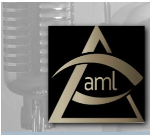Using media to develop critical literacy skills
by Diana Luciani, former AML Board member; teacher – Peel District School Board, Ontario
These lessons inform the Media Strand of Ontario’s Grade 9 Applied-level English course. Students will examine various forms of media, analyze them for bias, and develop critical literacy skills. Since media texts convey messages—both overt and implied—and have a significant influence on students’ lives, media is used here to help students develop critical thinking.
Students will examine various media texts – including newspapers, TV newscasts, advertisements and PSAs – to interpret their meaning and messaging, identifiable ideologies, deconstruct their form (including how they are constructed and why they are produced.)
Materials:
- Newspapers
- TV newscasts
- Background materials from MediaSmarts! (www.mediasmarts.ca)
- PSAs from the Ad Council website (www.adcouncil.org)
- AML Media Studies Triangle (use as a handout)
- AML Eight Key Concepts of Media Literacy (use as a handout)
- AML Media frameworks – Codes and Conventions (use as a handout)
- Media log handout
- PSA and advertisement questionnaire
Key Concepts of Media Literacy addressed in this activity:
- Media construct reproductions of reality.
- Media represent versions of reality.
- Audiences use past experiences and skills to negotiate meanings in media texts.
- Media tests have economic implications.
- Media texts communicate values messages.
- Media texts communicate political and social messages.
- Media texts’ form and content combine to communicate meaning.
- Each medium has a unique aesthetic that helps determine what is effective and pleasing.
Curriculum Expectations:
Students will:
- differentiate between fact and opinion; evaluate the credibility of sources, recognize bias; be attuned to discriminatory portrayals of individuals and groups and question depictions of violence and crime.
- Be able to critically interpret the messages they receive through various media.
- Explain how media texts are created to suit particular purposes and audiences.
- Interpret simple media texts and some teacher-selected media texts, identifying some of the overt and implied messages they convey.
- Evaluate how effectively information and ideas are communicated in simple media texts and some teacher-selected complex media texts, and decide whether the texts achieve their intended purpose.
- Identify how different audiences might respond to selected media texts.
- Identify the perspectives and/or biases evident in a few simple media texts and teacher-selected media texts and comment on any questions they may raise about beliefs, values and identity
- Explain how media texts are created to suit particular purposes and audiences.
- Interpret media texts, identifying and explaining the overt and implied messages they convey.
- Identify general characteristics of a few different media forms and explain how they shape content and create meaning.
- Identify a few different conventions and/or techniques used in familiar media forms and explain how they convey meaning.
Timeline: 4 days
Before: (Day 1)
To build awareness, and to activate prior form and content knowledge, students are introduced to the concept of bias, particularly as it relates to news coverage in newspapers and television broadcasts. Provide students with background knowledge of the following: news judgement, bias, functions of a daily newspaper, editorial page, advertising, etc. (This background information is available through the MediaSmarts! website (www.mediasmarts.ca)
As a class, discuss examples, then give students the opportunity to find their own examples in newspapers. In groups, students will compare articles about the same news event – each reported from a different perspective. As well, they will look at front-page news, including headlines, and editorials. Students will present their findings (formative evaluation for understanding of concepts).
During: (Day 2-3)
To build on analysis and reflection, piggyback on the previous day’s lesson on bias and news coverage. Show students two pre-recorded newscasts. Students will analyze them by charting their findings in a log handout.
The log will help guide students as they screen each broadcast, answer guided questions, and draw conclusions. The log will help students’ deconstruction of the broadcasts, and they can then use this log as reference for writing a brief reflection on their comparison.
Collect logs and analyze reflections. Linking to prior discussions, students will be introduced to media influences through advertising and PSAs.
Using the media triangle and key media concepts handouts, the class will garner an understanding of the media forms and their purpose, including messages and interests. Students will view teacher-selected examples and use a questionnaire to guide them through their viewing experience. Class discussions will follow each example, with students adding notes to their original findings. Questionnaires should be collected and analyzed.
After: (Day 4)
For students to act, share and reflect on their learning after in-class examinations and deconstructions of texts (viewing, analyzing, discussing), assign students to bring in their own media examples of bias (ones they’ve discovered outside the classroom), and present these in class as part of a culminating task. Students can choose a print example (newspaper) or a broadcast example (select a PSA from the Ad Council website to deconstruct – assign students to view PSAs from the Ad Council website).
Students will write a personal reflection of their findings and learning and present these as a 5-minute presentation on bias. Use the in-class work (prior knowledge), individual presentations and reflection to measure learning and achievement in development of critical literacy.
Some of these ideas can be used in the Elementary classroom. They were written for Secondary students in Ontario. – ed.



